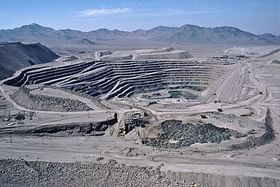The Centre will start the auction of Lithium reserves found in Jammu and Kashmir by December, said Secretary of Ministry of Mines Vivek Bharadwaj.
Speaking at an industry event on 2 May, the secretary said the ministry has written to the Jammu and Kashmir administration for the transaction advisor for the lithium auction.
“We have been lucky to discover 5.9 million tonnes of Lithium. We were actually looking for limestones that are available in Jammu and Kashmir. We found limestone, bauxite, and lithium together. There has been renewed interest in exploration in these minerals,” Bharadwaj said.
The transaction advisor will offer suggestions to the government on the procedure and method of auction besides preparing the model bid document.
February Find
Earlier in February 2023, the Ministry of Mines had announced that the Geological Survey of India (GSI) had established stablished “lithium inferred resources” — calculated on the basis of physical and chemical study of the surface and samples — in Salal-Haimana area of Reasi District of Jammu and Kashmir.
The resources to the tune of 5.9 million tonnes (MT) have been established as part of the “Reasi Sersandu-Kherikot-Rahotkot-Darabi” mineral block, where prospecting has been ongoing since 2021-22.
The mines are at a preliminary exploration stage (also called G3) — one of three categories that mineral resources are subdivided into, in order of increasing geological confidence.
The “inferred” mineral resource is the part of a resource for which quantity, grade and mineral content are estimated only with a low level of confidence based on information gathered from locations such as outcrops, trenches, pits, workings and drill holes that may be of limited or uncertain quality, and also of lower reliability from geological evidence.
Most of the resources in Jammu and Kashmir are in rock formation and those acquiring the blocks may need to put up processing plants.
Lithium Criticality
Also referred to as “white gold”, lithium is a non-ferrous metal and is used in rechargeable batteries, which power not only laptops and mobile phones but also electric vehicles (EVs) — a crucial part of the world’s plan to tackle climate change.
Lithium-ion batteries offer a longer life cycle as compared to traditional lead-acid batteries.
However, the main reason for their high adoption in EVs is their high energy density. High energy density allows lithium-ion batteries to store more energy in less weight/volume, which is an ideal requirement for e-mobility applications.
Argentina is ranked among the main mineral reserves across the globe. Together with Chile and Bolivia, the north-west of the country forms the so-called “Lithium Triangle” and is currently the fourth largest producer and has the third largest world reserve of this mineral.
The proven reserves in Chile and Bolivia are well over 20 million metric tonnes, 17 million tonnes in Argentina, 6.3 million tonnes in Australia and 4.5 million tonnes in China.
Australia is the top lithium producer globally. The US and China, too, are key producers of the mineral besides the Lithium Triangle.
This is the first significant discovery of lithium in India, as previously only a small reserve had been discovered in Karnataka.
Preliminary surveys by Atomic Minerals Directorate for Exploration and Research (AMD), a constituent unit of the Department of Atomic Energy (DAE) have shown presence of lithium inferred resources of 1,600 tonne in Marlagalla in Mandya district of Karnataka.
The auction of lithium mines found in J&K will be the first for the country – India currently imports all its lithium need.


